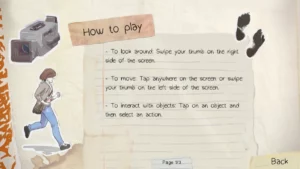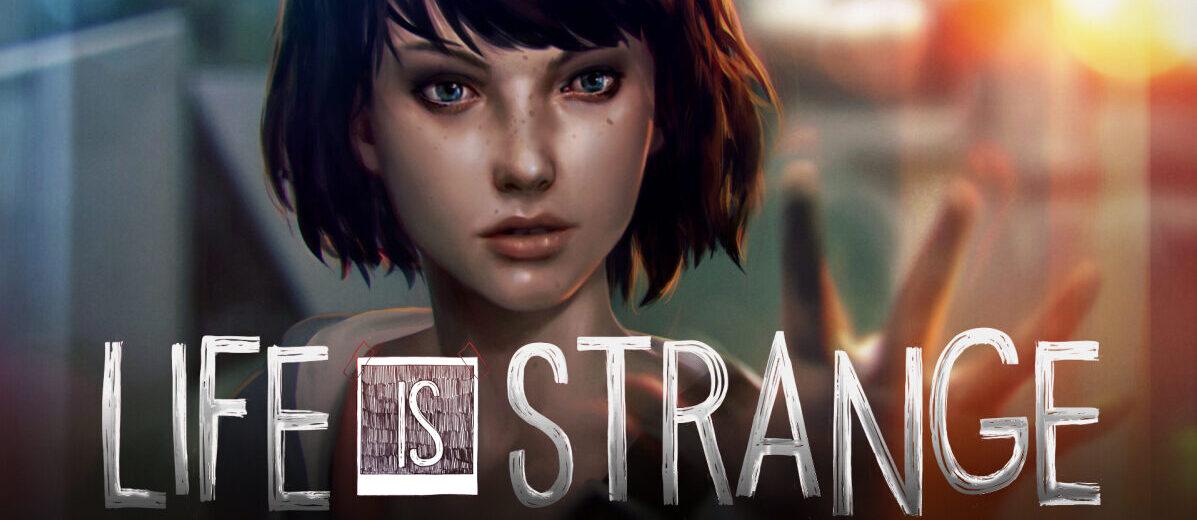About the Game
This week I played the mobile app version of Life Is Strange, a game published by Square Enix’s External Studios and created by Dontnod Entertainment. Life Is Strange was originally released as a standalone game, but due to its commercial success and critical acclaim, a handful of follow-up games have been released as well over the years. Based on my experience playing this game, I would argue that the target demographic for this game is likely to be teenagers and young adults. The game deals with themes of mental health, navigating relationships, and figuring out one’s identity — all extremely relevant to players in this age range.

Game Mechanics
In terms of game mechanics, Life Is Strange has significant overlap with the ‘walking simulator’ games that we played last week. Gameplay mainly consists of selecting a spot on the ground where you would like the protagonist, Max Caulfield, to move to and selecting objects for her to interact with. The game also is extremely narrative-driven, as most walking simulators are. However, although Life Is Strange focuses heavily on this notion of exploration through basic movement, the game also employs more traditional gaming elements.

Besides selecting where Max should walk and what objects she should interact with, a main game mechanic is the player’s ability to reverse time. This allows players to experiment and play scenes over again, allowing them to see what would happen if they selected dialogue options that they had previously not chosen, or if they did the same series of events in a different order. Gameplay in Life Is Strange is independent, with the player working to solve an over-arching mystery as to why a girl has gone missing. This mystery is introduced into the story over time, at first starting as subtle ‘missing girl posters’ in the background and then becoming core to the dialogue and goals within a scene. A player cannot lose or die necessarily, but the game can require them to restart a scene over again and to make a different set of choices in order to proceed to the next scene.
Due to the ‘rewind’ ability, this game quite literally is made up of loops. Throughout the gameplay, the player learns information, makes a choice, gets feedback, and has the option (although sometimes the choice is made for them) to replay the scene and do things slightly differently. The player has now updated their mental model and can adjust how they want to play the scene over, in order to maximize things that are important to Max (getting information, pleasing others, developing relationships, etc.).

Why It’s Fun!
Since exploration is a huge part of this game, Life Is Strange relies heavily on discovery as a source of fun. Players find enjoyment in the process of walking around each environment, observing various items up close, and finding out new bits of information about the mystery at hand. Additionally, since the game is so plot-driven, narrative is another huge source of fun for players. By creating a compelling storyline with multiple unknowns to figure out (an unexplained secret power, a missing girl, mysterious visions of a massive storm, etc.), the game developers are able to keep players motivated and engaged in gameplay. Finally, I would argue that sensation is a source of fun for Life Is Strange because the visuals are aesthetically pleasing and the soundtrack is intriguing.
While playing Life Is Strange I felt pretty immersed in the story and the game, and I felt like it was something that I was doing for fun rather than for a school assignment. If I had to make some changes, however, one thing I would do is introduce the overarching mystery narrative of the missing girl earlier, because at first, the storyline didn’t seem very clear. I also enjoyed that Max had a cell phone and a journal and an inventory of collected artifacts that the player could look through, but I found the interfaces to be a bit confusing – I think they could definitely use a redesign.



